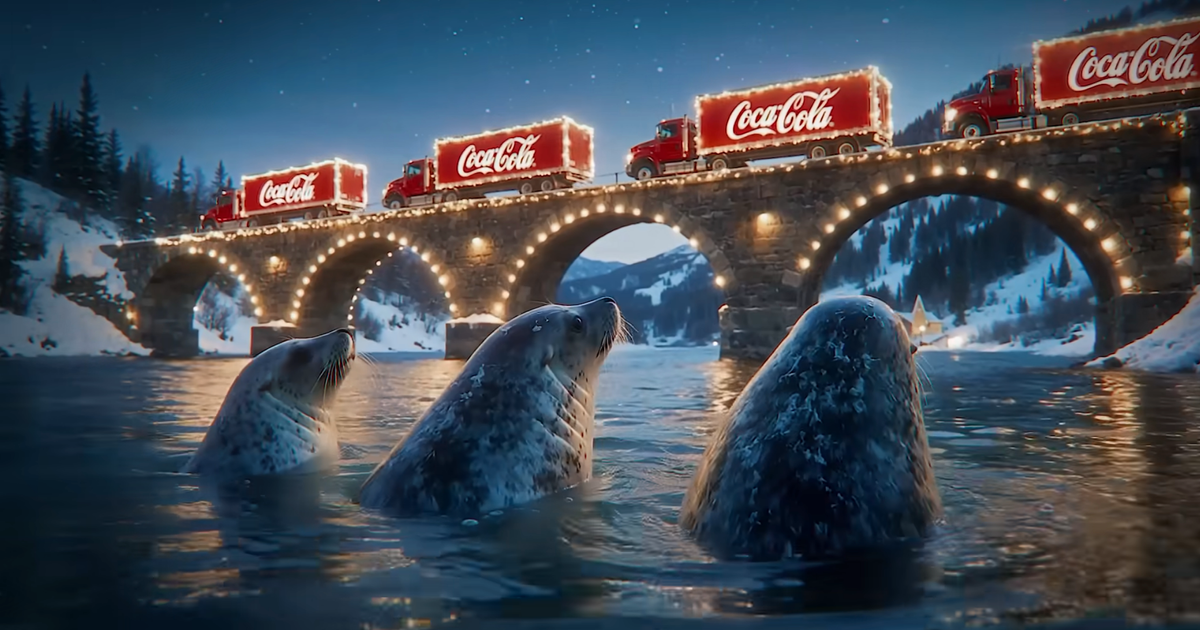
"The second critique was that the ads looked terrible, which they did. The snowy, festive scenes were filled with the now-familiar hallmarks of visual AI slop: trees and buildings with plasticky textures; suspiciously smooth curvatures; synthetic people with lifeless eyes, glossy white teeth, and faces that seem like the base templates of a video-game character creator. The entire world looks like it's covered in Saran wrap."
"Coke didn't meaningfully address the backlash, instead releasing a generic statement noting that the company remained "dedicated to creating the highest level of work at the intersection of human creativity and technology." But it did mount a kind of response. This year, the company returned with yet another generative-AI-made holiday campaign, this time swapping out sloppy humans for even sloppier-looking animals: penguins, hedgehogs, seals, the requisite polar bears, an inexplicable sloth, plus Santa Claus, who isn't real, so he fits the logic."
Coca-Cola used generative AI to produce a Christmas ad campaign riffing on its 1995 'Holidays Are Coming' spot and drew online criticism. Critics objected to the use of generative AI because of associations with corporate cost-cutting and potential job losses, and also criticized the ads' poor visual quality. The snowy scenes displayed typical visual-AI flaws: plasticky textures, smooth curvatures, and synthetic faces. Coca-Cola issued a generic statement claiming dedication to human creativity and technology while not meaningfully addressing the backlash. The company released another AI-made holiday campaign replacing humans with animals. Coca-Cola claimed over 100 people worked on the campaign, a figure later presented as decontextualized by The Wall Street Journal.
Read at Vulture
Unable to calculate read time
Collection
[
|
...
]